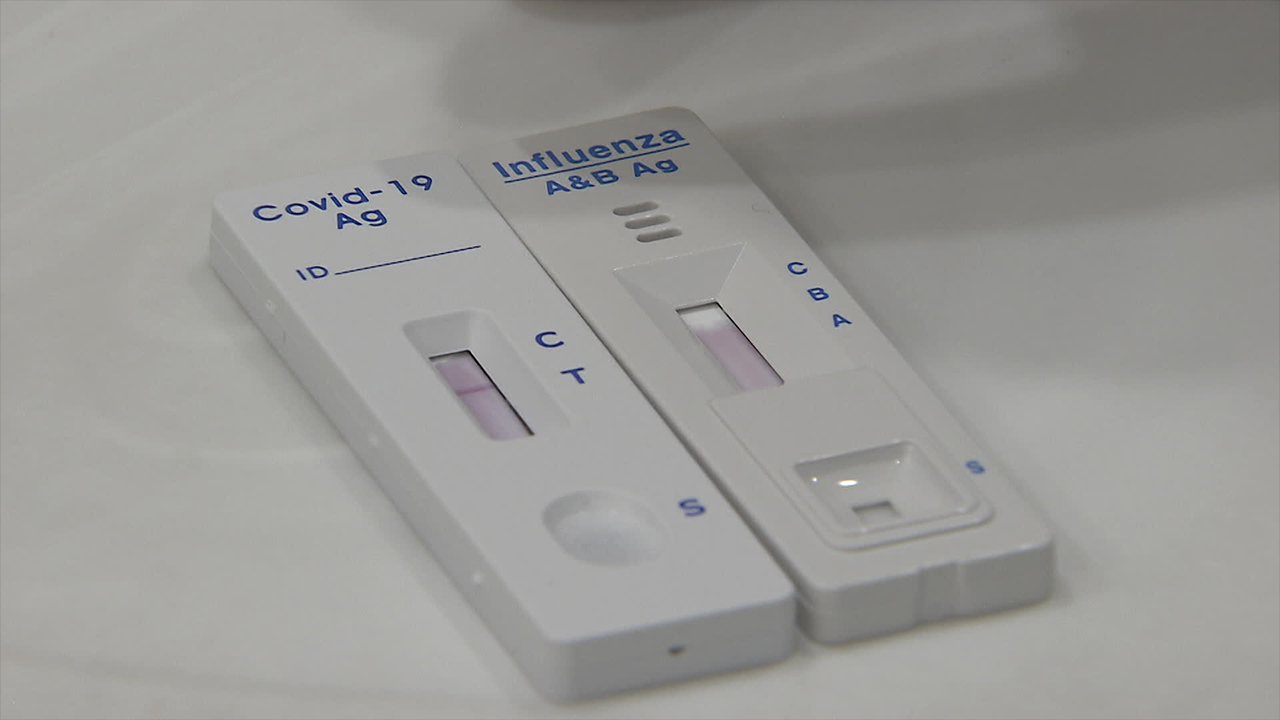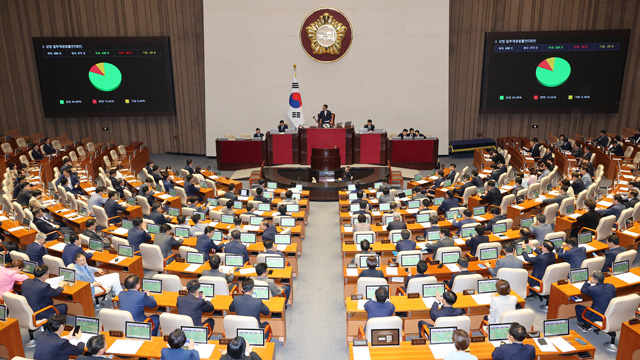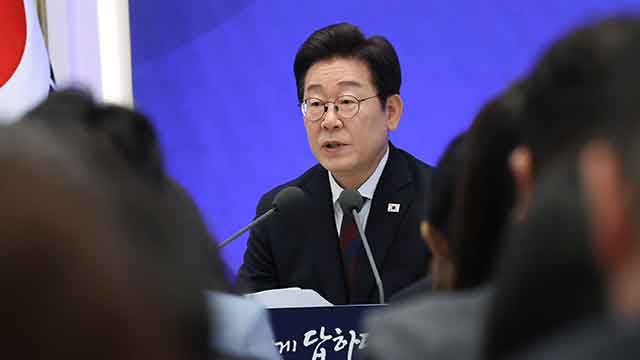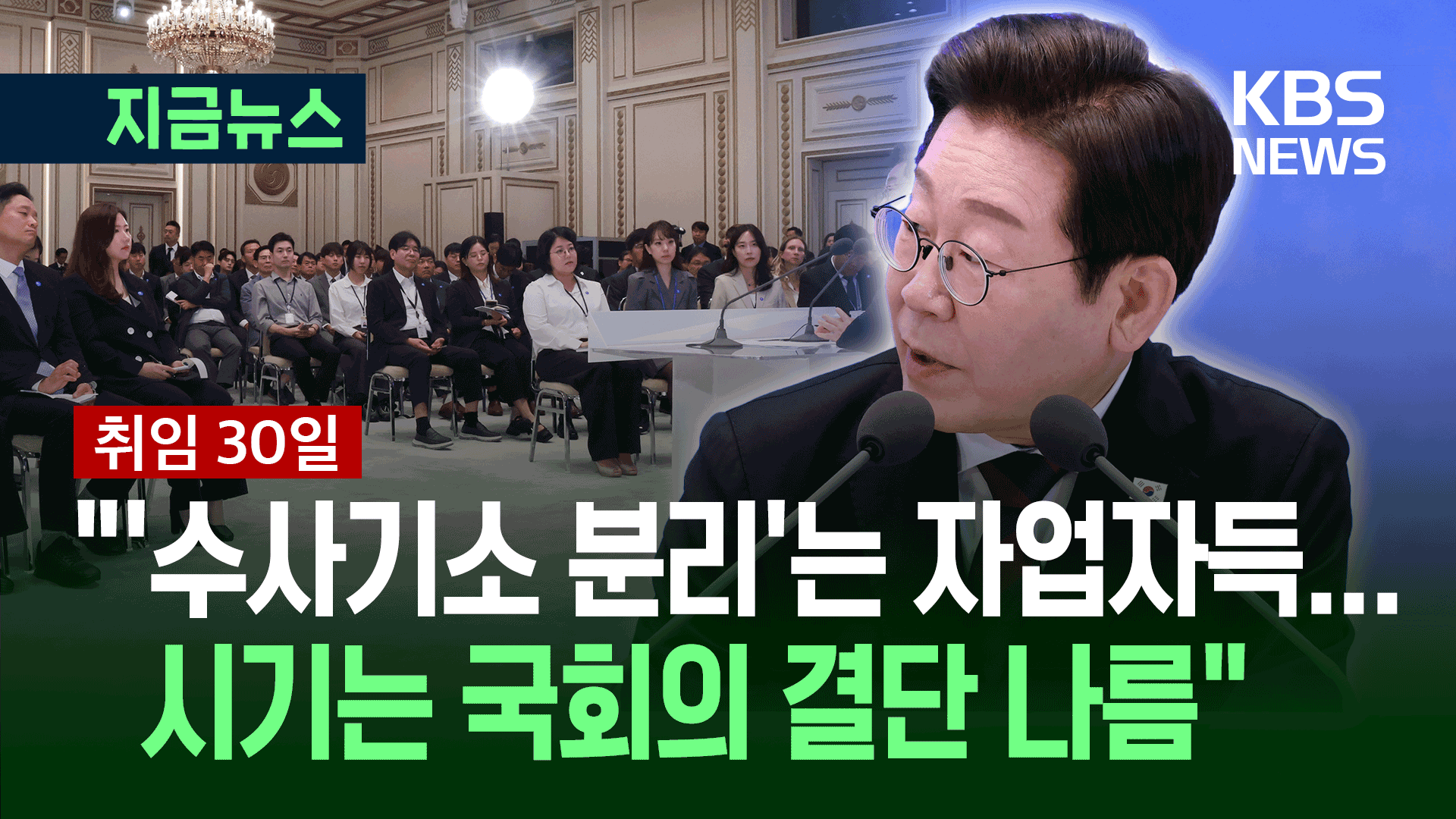Low vaccination rates and COVID-19 aftermath fuel flu surge
입력 2025.01.04 (00:43)
읽어주기 기능은 크롬기반의
브라우저에서만 사용하실 수 있습니다.
[Anchor]
The low vaccination rate compared to last winter is cited as a reason for the flu's resurgence.
There are analyses suggesting that the COVID-19 pandemic has also contributed to the flu outbreak.
What kind of impact is this? Medical reporter Park Kwang-sik has looked into it.
[Report]
As indoor activities increase and the dry winter season sets in, the flu virus spreads easily.
Students, who spend long hours in crowded indoor spaces such as schools and academies, are particularly vulnerable to infection.
[Song Jun-young/Professor of Infectious Diseases at Korea University Guro Hospital: "In indoor spaces where close contact occurs frequently, even if one infected person is present, the likelihood of secondary and tertiary transmission is very high."]
This winter, the cold weather started later than usual, resulting in a 2-3% lower vaccination rate compared to last winter.
This means that 90,000 infants and children, and 220,000 elderly people aged 65 and over received fewer vaccinations.
Additionally, the significant decrease in flu patients during the COVID-19 pandemic is also considered a factor contributing to the current flu outbreak.
[Lee Jae-gap/Professor of Infectious Diseases at Hallym University Gangnam Sacred Heart Hospital: "During the COVID-19 pandemic, influenza hardly spread, leading to a significant number of people who were not infected, and the immunity to influenza within our population has decreased considerably."]
The virus currently circulating is mostly type A influenza, which can be sufficiently prevented with vaccination.
Getting vaccinated can reduce the risk of flu infection by 60%, and even if infected, the likelihood of severe complications is greatly reduced.
However, the vaccine's preventive effect appears 2-3 weeks after vaccination.
In the initial period after vaccination, it is advisable to avoid crowded places and to ventilate enclosed indoor spaces frequently.
This is KBS News, Park Kwang-sik.
The low vaccination rate compared to last winter is cited as a reason for the flu's resurgence.
There are analyses suggesting that the COVID-19 pandemic has also contributed to the flu outbreak.
What kind of impact is this? Medical reporter Park Kwang-sik has looked into it.
[Report]
As indoor activities increase and the dry winter season sets in, the flu virus spreads easily.
Students, who spend long hours in crowded indoor spaces such as schools and academies, are particularly vulnerable to infection.
[Song Jun-young/Professor of Infectious Diseases at Korea University Guro Hospital: "In indoor spaces where close contact occurs frequently, even if one infected person is present, the likelihood of secondary and tertiary transmission is very high."]
This winter, the cold weather started later than usual, resulting in a 2-3% lower vaccination rate compared to last winter.
This means that 90,000 infants and children, and 220,000 elderly people aged 65 and over received fewer vaccinations.
Additionally, the significant decrease in flu patients during the COVID-19 pandemic is also considered a factor contributing to the current flu outbreak.
[Lee Jae-gap/Professor of Infectious Diseases at Hallym University Gangnam Sacred Heart Hospital: "During the COVID-19 pandemic, influenza hardly spread, leading to a significant number of people who were not infected, and the immunity to influenza within our population has decreased considerably."]
The virus currently circulating is mostly type A influenza, which can be sufficiently prevented with vaccination.
Getting vaccinated can reduce the risk of flu infection by 60%, and even if infected, the likelihood of severe complications is greatly reduced.
However, the vaccine's preventive effect appears 2-3 weeks after vaccination.
In the initial period after vaccination, it is advisable to avoid crowded places and to ventilate enclosed indoor spaces frequently.
This is KBS News, Park Kwang-sik.
■ 제보하기
▷ 카카오톡 : 'KBS제보' 검색, 채널 추가
▷ 전화 : 02-781-1234, 4444
▷ 이메일 : kbs1234@kbs.co.kr
▷ 유튜브, 네이버, 카카오에서도 KBS뉴스를 구독해주세요!
- Low vaccination rates and COVID-19 aftermath fuel flu surge
-
- 입력 2025-01-04 00:43:03

[Anchor]
The low vaccination rate compared to last winter is cited as a reason for the flu's resurgence.
There are analyses suggesting that the COVID-19 pandemic has also contributed to the flu outbreak.
What kind of impact is this? Medical reporter Park Kwang-sik has looked into it.
[Report]
As indoor activities increase and the dry winter season sets in, the flu virus spreads easily.
Students, who spend long hours in crowded indoor spaces such as schools and academies, are particularly vulnerable to infection.
[Song Jun-young/Professor of Infectious Diseases at Korea University Guro Hospital: "In indoor spaces where close contact occurs frequently, even if one infected person is present, the likelihood of secondary and tertiary transmission is very high."]
This winter, the cold weather started later than usual, resulting in a 2-3% lower vaccination rate compared to last winter.
This means that 90,000 infants and children, and 220,000 elderly people aged 65 and over received fewer vaccinations.
Additionally, the significant decrease in flu patients during the COVID-19 pandemic is also considered a factor contributing to the current flu outbreak.
[Lee Jae-gap/Professor of Infectious Diseases at Hallym University Gangnam Sacred Heart Hospital: "During the COVID-19 pandemic, influenza hardly spread, leading to a significant number of people who were not infected, and the immunity to influenza within our population has decreased considerably."]
The virus currently circulating is mostly type A influenza, which can be sufficiently prevented with vaccination.
Getting vaccinated can reduce the risk of flu infection by 60%, and even if infected, the likelihood of severe complications is greatly reduced.
However, the vaccine's preventive effect appears 2-3 weeks after vaccination.
In the initial period after vaccination, it is advisable to avoid crowded places and to ventilate enclosed indoor spaces frequently.
This is KBS News, Park Kwang-sik.
The low vaccination rate compared to last winter is cited as a reason for the flu's resurgence.
There are analyses suggesting that the COVID-19 pandemic has also contributed to the flu outbreak.
What kind of impact is this? Medical reporter Park Kwang-sik has looked into it.
[Report]
As indoor activities increase and the dry winter season sets in, the flu virus spreads easily.
Students, who spend long hours in crowded indoor spaces such as schools and academies, are particularly vulnerable to infection.
[Song Jun-young/Professor of Infectious Diseases at Korea University Guro Hospital: "In indoor spaces where close contact occurs frequently, even if one infected person is present, the likelihood of secondary and tertiary transmission is very high."]
This winter, the cold weather started later than usual, resulting in a 2-3% lower vaccination rate compared to last winter.
This means that 90,000 infants and children, and 220,000 elderly people aged 65 and over received fewer vaccinations.
Additionally, the significant decrease in flu patients during the COVID-19 pandemic is also considered a factor contributing to the current flu outbreak.
[Lee Jae-gap/Professor of Infectious Diseases at Hallym University Gangnam Sacred Heart Hospital: "During the COVID-19 pandemic, influenza hardly spread, leading to a significant number of people who were not infected, and the immunity to influenza within our population has decreased considerably."]
The virus currently circulating is mostly type A influenza, which can be sufficiently prevented with vaccination.
Getting vaccinated can reduce the risk of flu infection by 60%, and even if infected, the likelihood of severe complications is greatly reduced.
However, the vaccine's preventive effect appears 2-3 weeks after vaccination.
In the initial period after vaccination, it is advisable to avoid crowded places and to ventilate enclosed indoor spaces frequently.
This is KBS News, Park Kwang-sik.
-
-

박광식 기자 doctor@kbs.co.kr
박광식 기자의 기사 모음
-
이 기사가 좋으셨다면
-
좋아요
0
-
응원해요
0
-
후속 원해요
0










![[단독] 김민석 총리, 취임 첫 일정으로 ‘송미령 반대’ <br>농민단체 농성장 방문](/data/news/2025/07/03/20250703_YUTdgQ.png)




이 기사에 대한 의견을 남겨주세요.